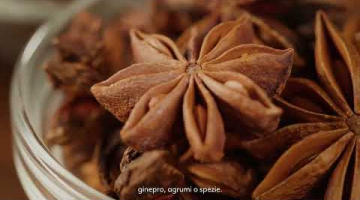Blue curaçao. Those two innocent words can quickly conjure visions of sickly sweet, electric-blue fish bowls and poorly made tiki drinks of past decades.
But that misunderstood mixer serves an important purpose, though it often requires a seasoned hand to prove. Over the past handful of years, blue curaçao has begun creeping back into craft cocktails—first, during the speakeasy revival of the mid-to-late 2000s—and again at New Orleans’ Tales of the Cocktail convention in 2012. At Tales, a trio of industry experts discussed the effects of color on cocktails’ taste and aroma, and whether or not the blue liqueur was really worth making yourself.
The purpose of each blue renaissance was simple, and the trend is cyclical: Bartenders reach another apex of cocktail craft and start to steer towards the ironic side of the spectrum in pursuit of a fresh perspective. That perspective? Reminding yourself that enjoying a cocktail should be fun—and a little pop of color goes a long way.
A little historical background on the surprisingly elderly liqueur: It originated on the small Caribbean island of Curaçao, discovered in 1499. Colonized by the Dutch in 1634, the island became known for its wild bitter orange (or laraha) trees, from which a fragrant oil was extracted. Lucas Bols, the head of an Amsterdam-based distillery, owned shares in the Dutch West India Company and exported that bitter orange oil back to his country. There, he developed a drink resembling modern curaçao, made with the orange oil and a brandy base, preserved with herbs and spices. Bols, a businessman who preferred a touch of mystery and alchemy in his products, is also credited as the first to add the trademark blue coloring to the orange liqueur.
Perhaps blue curaçao has Lucas Bols to thank for its original bad rap. Yet despite its past of falling in and out of favor, it seems that the scrappy blue quaff is making yet another comeback. Bartenders in the states and beyond are once again using colored curaçao in earnest, sending their modern craft cocktails out into the wild blue yonder.
Blue in the face: the mint-muddled Leaps and Bounds.
Blue curaçao seems to have found a safe haven in Massachusetts, especially in the Boston area. Just outside of the city in Somerville, a fairly new bar and restaurant, The Kirkland Tap & Trotter, is crafting its own house-made blue curaçao—a practice rarely seen in cocktail programs. Made with a combination of vodka, gin, bitter orange peel and cloves, the from-scratch liqueur steeps for about 20 days. It’s then tinted and put to use in house cocktails like the Leaps and Bounds, a bold highball of blanco tequila, blue curaçao and mint-infused simple syrup.
Several other Beantown bars are also on board with blue. Bartenders Kevin Mabry of Merrill & Co. and Jason Cool of The Franklin Cafe both champion the use of blue curaçao for its cheerful aesthetics. For Mabry, blue curaçao presented a way to highlight Merrill & Co.’s New England seafood focus with an ocean-inspired drink. The tequila-based Ocean Mist is shaken with apricot liqueur, lemon, sea salt and an egg white, and when poured over blue curaçao, the cocktail transitions from blue to aqua to sea foam green, with a crest of white foam.
But why the group effort to bring blue curaçao back? As Mabry says, “There’s been so much push for brown, bitter, obscure ingredients—I think we should be focusing on making delicious drinks that are fun at the end of the day [...] Bright cocktails with bright flavors could use a little blue.” Cool agrees, and delights in preparing blue curaçao cocktails for guests who have a “preconceived notion of what blue tastes like.”
Cool believes that blue curaçao can be worked into any cocktail, but says it’s best used with clear spirits like unaged mezcal, white whiskey, cachaça and pisco to showcase its color. He’s even found references to the sapphire liqueur in the 1937 Cafe Royal Cocktail Book: Coronation Edition, which hosts a selection of blue curaçao recipes and proves his theory that it was once widely popular in Europe.
Kevin Mabry’s Ocean Mist channels the New England coast with sea salt and a crest of white foam.
The rebirth of blue-eyed cocktails isn’t particular to Boston. Respected bartenders near and far are featuring the liqueur in their meticulously-crafted drink rosters. Take Brooklyn cocktail king Maxwell Britten. He’s paired blue curaçao with the lofty likes of absinthe at Maison Premiere and has witnessed a growing obsession with tiki cocktails among bar professionals. Britten believes that “we are in a new era of beverage culture that allows us to be more playful with ingredients while maintaining the expectation for great cocktails. Blue curaçao is one symbolic ingredient in tiki-style drinks that really captures the progression of cocktail culture and adds fun to a menu.”
With influence extending even across the pond, blue curaçao also made its way into a featured cocktail from the Diageo World Class Global Best Bartender Winner last year. David Rios of Spain’s Jigger Cocktail Bar used the liqueur to color his Musica es Vida, an intense vodka cocktail with a sharp jolt of citrus from tangerine liqueur, pineapple, blue curaçao and lime bitters. This bold blue move clearly played a part in his triumph during the competition.
Read more at http://liquor.com/articles/blue-curacao-is-back/#KRTQ8txWEuJhCwk0.99
















